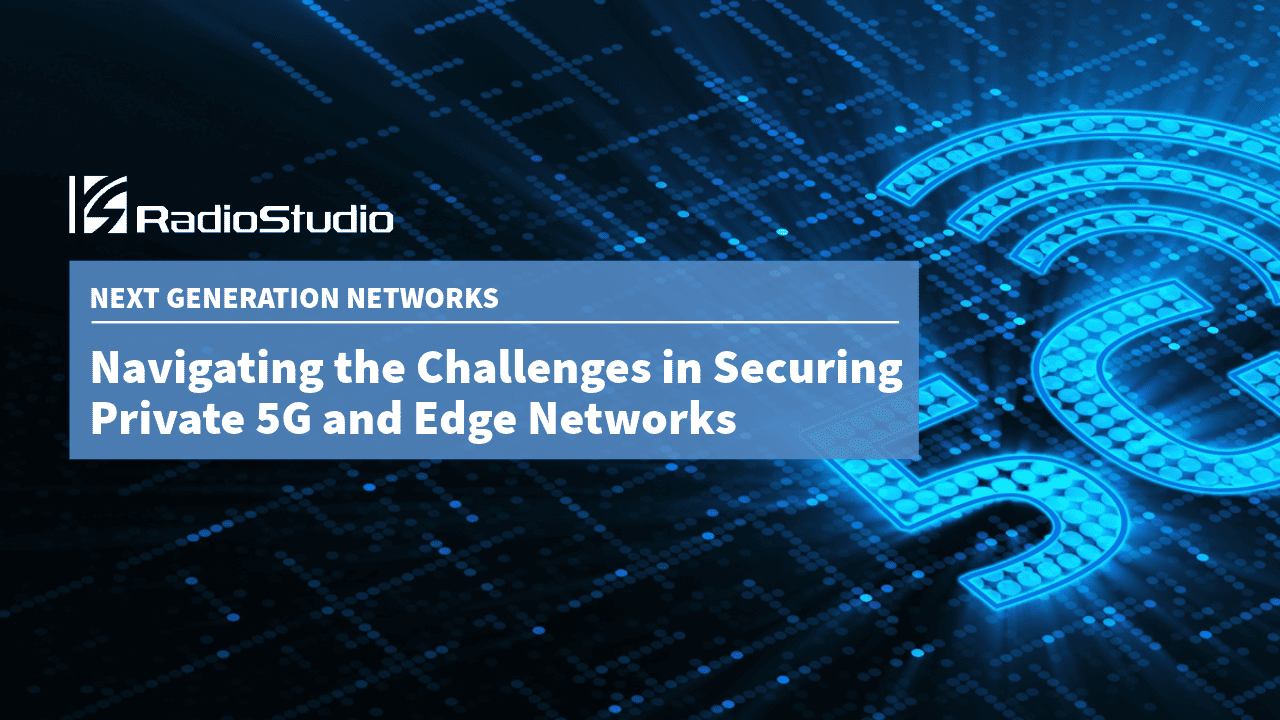As Private 5G and EDGE networks become integral across various industries, organizations are capitalizing on their transformative potential to enhance operational efficiency and revolutionize business processes. However, the rapid deployment of these networks brings forth a set of challenges in securing private 5G and edge networks that demand careful consideration and strategic addressing.
This post was originally published in Niral Networks.
Security Challenges
Unauthorized Access
Private 5G and EDGE networks are often deployed in environments that are not as physically secure as traditional enterprise networks. This can make them more susceptible to unauthorized physical access by malicious actors. Additionally, the decentralized nature of Private 5G and EDGE networks can make it more difficult to monitor and control access to the network.
To mitigate the risk of unauthorized access, businesses should implement the following measures:
- Implement physical security measures to control access to network equipment.
- Use strong authentication mechanisms to control access to the network.
- Implement role-based access control (RBAC) to restrict access to sensitive data and network resources.
- Monitor network traffic for suspicious activity.
Denial-of-Service (DoS) Attacks
DoS attacks are designed to overwhelm network resources, making them unavailable to legitimate users. These attacks can disrupt critical operations and cause significant financial losses. Private 5G and EDGE networks are particularly susceptible to DoS attacks because they often have limited bandwidth and processing power.
To mitigate the risk of DoS attacks, businesses should implement the following measures:
- Implement network traffic filtering to block malicious traffic.
- Implement rate limiting to prevent a single user or device from consuming too much bandwidth.
- Deploy load balancers to distribute traffic across multiple network devices.
- Implement redundancy to ensure that the network can continue to operate if a device is compromised.
Man-in-the-Middle (MitM) Attacks
MitM attacks intercept data transmissions between devices, allowing attackers to eavesdrop on sensitive communications or manipulate data in transit. Private 5G and EDGE networks are particularly susceptible to MitM attacks because they often use wireless communications.
To mitigate the risk of MitM attacks, businesses should implement the following measures:
- Use encryption to protect data in transit.
- Use strong authentication mechanisms to verify the identity of devices and users.
- Implement network segmentation to isolate critical systems from the rest of the network.
Supply Chain Attacks
Supply chain attacks target vulnerabilities in third-party hardware or software components to gain access to the network or compromise its integrity. Private 5G and EDGE networks are particularly susceptible to supply chain attacks because they often consist of components from multiple vendors.
To mitigate the risk of supply chain attacks, businesses should implement the following measures:
- Vet third-party vendors carefully.
- Implement a secure software development lifecycle (SDLC).
- Regularly patch and update third-party software.
Privacy Considerations
Data Collection and Usage
Private 5G and EDGE networks generate a vast amount of data about connected devices and applications. This data can be used to track user movements, create detailed profiles, and target advertising. Businesses need to be transparent about how they collect and use this data and comply with data privacy regulations.
To protect user privacy, businesses should implement the following measures:
- Obtain user consent for data collection.
- Minimize data collection to only what is necessary for the intended purpose.
- Encrypt data at rest and in transit.
- Implement data retention policies.
- Provide users with access to their data and the ability to correct or delete it.
Location Tracking and User Profiling
The ability to track user movements and create detailed profiles based on their network activity poses significant privacy concerns. Private 5G and EDGE networks make it possible to track users with greater accuracy and granularity than ever before.
To protect user privacy, businesses should implement the following measures:
- Obtain user consent for location tracking.
- Minimize location tracking to only what is necessary for the intended purpose.
- De-identify data to protect user anonymity.
- Provide users with access to their location data and the ability to opt out of location tracking.
Third-party Access and Data Sharing
Businesses often share data with third-party providers, such as cloud providers and analytics firms. This can increase the risk of data breaches and unauthorized access to sensitive information.
To protect user privacy, businesses should implement the following measures:
- Carefully vet third-party providers.
- Implement data sharing agreements that specify how data will be used and protected.
- Monitor third-party access to data.
While Private 5G and EDGE networks offer numerous benefits, they necessitate proactive measures to address security and privacy challenges. Following the recommendations outlined in this blog post empowers businesses to ensure the security and privacy of their Private 5G and EDGE networks, thereby maximizing the benefits of these transformative technologies.


